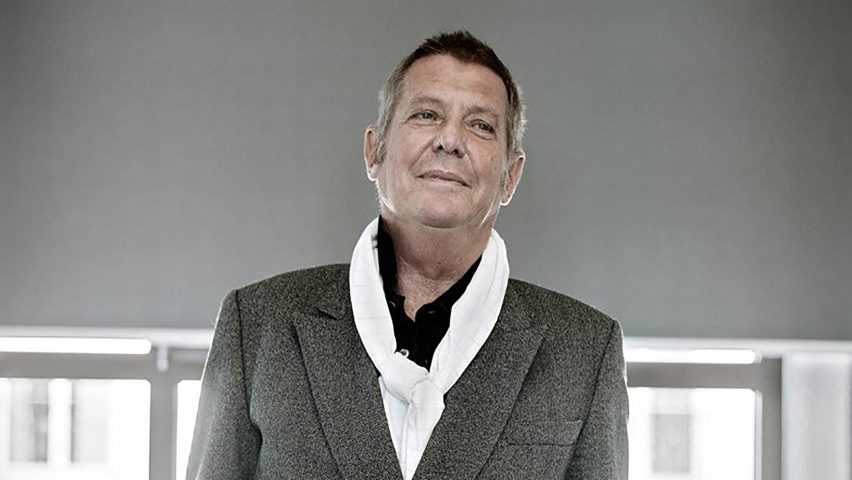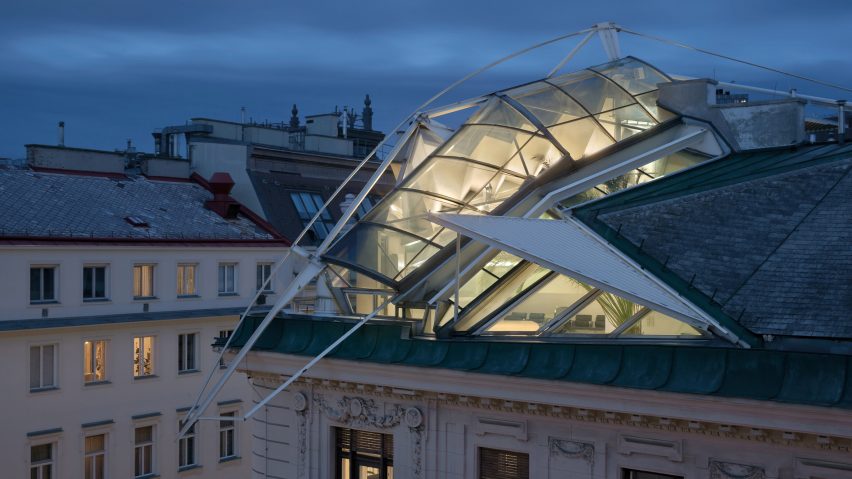
Coop Himmelb(l)au was "closest to so-called deconstructivism" says Wolf Prix
Deconstructivism aimed to break free from the constraints of traditional architectural thinking, says Coop Himmelb(l)au co-founder Wolf Prix in this exclusive interview as part of our deconstructivism series.
According to Prix, the Austrian studio set out to "liberate" space, which had previously been constrained by regular geometry.
"We have to liberate space because this is our competence," the 79-year-old architect told Dezeen.
"An architect’s competence is to create space, not to create facades, not to think about computer shit, not to think about structure and screeds – this is ridiculous," he continued. "The only thing architects are trained to do is create space."
"The greatest sickness of architects is obedience"
Deconstructivism developed in the 1980s as a rejection of both the prevalent modernist and post-modernist architecture styles.
Prix believes that the essence of deconstructivism was breaking free of the rules dedicated by these styles and the demands of clients.
"The greatest sickness of architects is obedience," said Prix.
"Architects say: 'I cannot do that because the client maybe doesn't like it, or it may be too expensive,' or whatever," he explained. "Architects think that they have to do this to make the client like it."
Founded in 1968 by Wolf, Helmut Swiczinsky and Michael Holzer, Coop Himmelb(l)au is a Vienna-based studio, which was included in MoMA's seminal Deconstructivist Architecture exhibition alongside six other radical architects.
Prix explained that the deconstructivist architects aimed to rethink how architecture was created and how it was spoken about.
"We had to change the vocabulary dramatically, otherwise we would never be able to develop a new language," Prix said. "If you only think in architectural terms, only architecture will come out."
"We wanted to change architecture radically"
To change the way buildings were designed, Coop Himmelb(l)au decided to focus on the point that a design was first conceived.
"When we came up with Coop Himmelb(l)au, we said that we wanted to change architecture radically," explained Prix.
"What's the weakest point in the procedure of developing a project? Where can we press this point in order to create a new language? The weak point in designing a project is at the moment of perception."

Rather than considering practical points, including the building's purpose and its inhabitants' needs, Coop Himmelb(l)au designed its buildings around the feeling spaces would have.
"Architects think it has to be a square because of the programme and it has to be constructed in concrete or steel and there must be the entrance, blah blah blah…" Prix said.
"We said there must be a point of departure, which is uncontrolled by codes, rules, constraints in order to liberate space."
Coop Himmelb(l)au created many radical installations and buildings using this ideology, including the Falkestrasse rooftop extension that Prix said "broke every rule".
This building was included in the MoMA exhibition alongside the work of Zaha Hadid, Frank Gehry, Rem Koolhaas, Daniel Libeskind, Peter Eisenman and Bernard Tschumi.
However, unlike many of the other architects in the exhibition, Prix is unconcerned about the deconstructivist label. Eisenman recently told Dezeen it is "a sham", while Libeskind told us he "always felt slightly repulsed" by the deconstructivist label.
Prix, however, embraced the deconstructivist term.
"This is the funny thing," said Prix. "Now every one of these guys says: 'no, no deconstructivism, no, no'. The only guy who said that this was a good point of departure, was me."
"Our architecture was the closest to the so-called deconstructivism."
"We lose power every day, but we get more responsibility"
Despite aiming to free architecture from many of its constraints, Prix believes that architects have become more restricted over the past 30 or 40 years.
"We as architects have to insist," he said. "If you are having heart surgery you don’t tell the doctor that you don't like a cut, this is ridiculous."
"But, this is the way people treat architects. 'I don't like what you did, because I want to have it the other way around.' This is ridiculous," he continued.
"And this is our fault. It's our fault that we are losing power. We lose power every day, but we get more responsibility."
Prix thinks that part of the issue is that architects do not focus solely on designing buildings and buildings are dictated by other parts of the process.
"Nowadays, architecture is going in a bad way," he said.
"They are concerned with planting green, they're concerned with attitudes of the inhabitants, they're concerned with climate – all other things are more important than the building."

Deconstructivism is one of the 20th century's most influential architecture movements. Our series profiles the buildings and work of its leading proponents – Eisenman, Koolhaas, Gehry, Hadid, Libeskind, Tschumi and Prix.
Read our deconstructivism series ›